Design


6 min

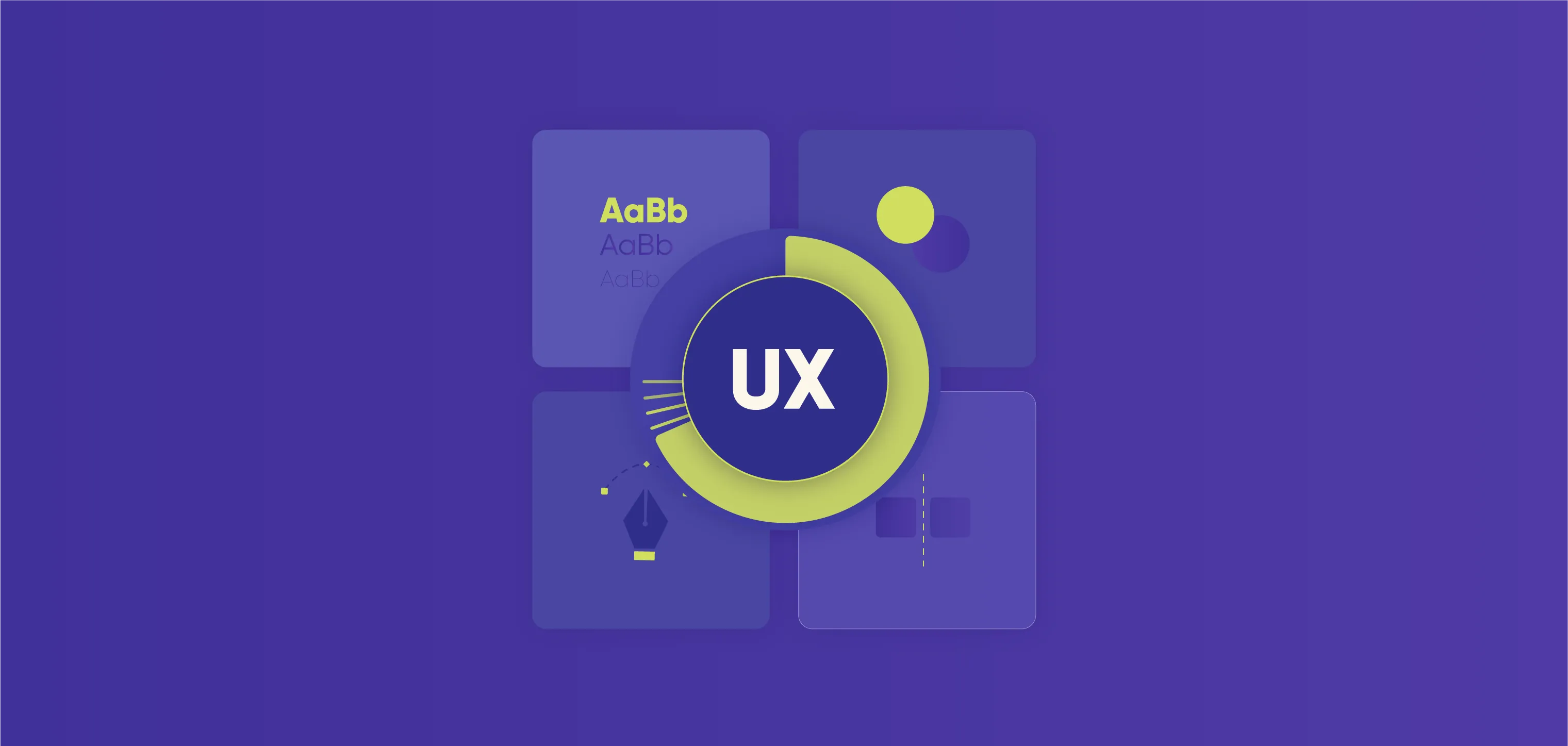
Wondering about the impact of Visual Design on overall user experience? Explore the blog by Quokka Labs to know the impact of Visual design on user experience.

By Digvijay Singh Tomar
31 May, 2022
Everyone judges a book by its cover, i.e., what appeals to people, sells! The judgment comes from the brain's visual cortex, whose work is to differentiate things it sees through via human eyes continuously.
So, it's natural that people will judge. It's not a negative aspect. Instead, the human brain's one of the functions through which it receives data/info and makes correlations.
Thus, these correlations, in layman's terms, are judgments! So, no need to worry if people judge you since you do that too! It's our nature. The only thing is - how and for what you use it. And based on that, it'll show you results!!
Forgive me; I got carried away a little. Let's get back to what we are here for.
What I just mentioned in the above paragraph applies to many things in our world, including our lives and various digital experiences from today's high- end electronic devices - usually mobile phones, desktops, laptops, tablets, and other electronic display devices.
By the term digital experiences, you can think of how products (both tangible and intangible) look and how they stimulate our brain, hence us. Things we see and observe directly impact how we experience them.
For example, the aesthetic–usability effect.
People tend to ignore a few usability shortcomings in aesthetically pleasing products.
Thus, the more a visual design is aesthetically pleasing, the more ignorance will be there from the users' end. And hence, visual design plays a crucial role in developing products with top-notch aesthetics so that people can't even notice the imperfections. Only a well-experienced designer can!!
This blog post is for you to explore -
An excellent and people-centric visual design simplifies our lives. And the credit goes to graphic designers that make it happen by using their influential observations and years of experience.
“They are the design world's problem-solvers. They bring life to brands and define a brand’s unique style and voice.”
Along with creating beautiful designs that please people, they always have a way to explain design concepts more beautifully and why they do what they do in their work.
Visual designers' work often overlaps with the work of the graphic design and UI design teams. But it doesn't stop them from going beyond putting efforts into individual plans/projects and taking full responsibility for a whole visual brand of a company.
Moreover, “Visual design” is not a new concept but rather a more recent term in the design world. And if one goes through a job title/job description, visual design usually implies - preparing individual designs to own the visual brand more comprehensively.
Working on print products is very rare for Visual designers, but it's good if they have a strong understanding of branding, graphic design, and identity design. With that, they also need exceptional visual messaging and communications skills to excel in the world of design.
You can break down any page or screen of a digital product into essential elements of visual appearance. Basic elements of visual design are -
Lines are the most basic and foremost element of any visual design. Since a line (straight or curved, smooth, rough, continuous, broken, thick, or thin) is any two connected points. A line brings division and hierarchy to your designs.
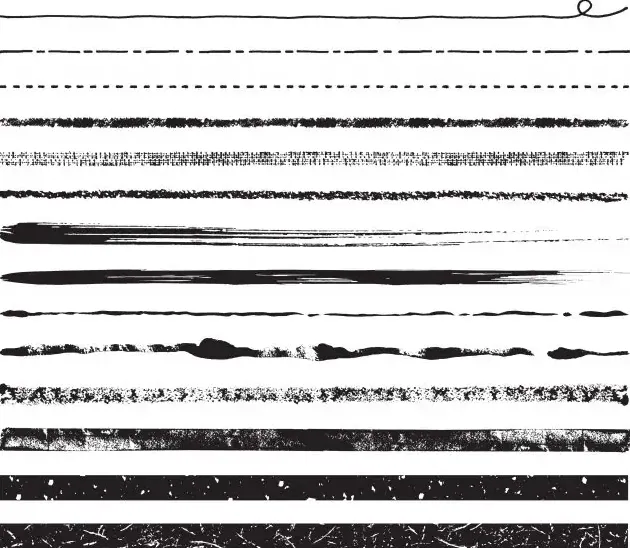 Lines with varied densities and curves. Image Source: Adobe Stock Photo
Lines with varied densities and curves. Image Source: Adobe Stock Photo
These lines help the user’s eye directly towards a specific focal point or information you want them to stress.
You have probably heard - a good design speaks for itself! Indeed, that is the case, and it's even true! Let me tell you how lines can create subliminal languages.
For instance, a diagonal line indicates movement since a straight line way cleaner and has more direct order, observe the below image from Virgin Group's Virgin Hyperloop website -
 Image Credit: Adobe Photo Stock
Image Credit: Adobe Photo Stock
It's a high-speed transportation system that reduces the traveling time from several hours to a few minutes.
For example, if this program becomes officially available to the public, it will take 2 minutes to reach Dallas to Fort Worth in Texas, and vice-versa.
And if you again observe the Hyperloop track in the above image, you will see that the lines making up the shape of a tube offer a sense of motion, hence the idea of high speed in this most innovative form of travel in human history.
There are two fundamental ways in which you can create a line -
 Image Credit: Adobe Photo Stock
Image Credit: Adobe Photo Stock
And, when you fully grasp the power of the line, it helps you define shapes, make divisions, and create textures, and puts you closer to creatively and efficiently using this fundamental design element to come up with unique designs.
Typography refers to chosen fonts' alignment, size, color, and spacing. It is one of the most crucial parts of graphic/visual, web, and UI design.
How you choose fonts and show them conveys a message/mood - a fun and playful story in a blog or a serious one through which people want to learn something new.
Typography can easily set a tone and create a visual hierarchy, showing people what and where to look and which things are of focus.
Hence, it acts as a guide for users to read the content from start to end. For example, Serif fonts evoke a more traditional feeling, while Sans Serif fonts are for showing modernism in your writings.
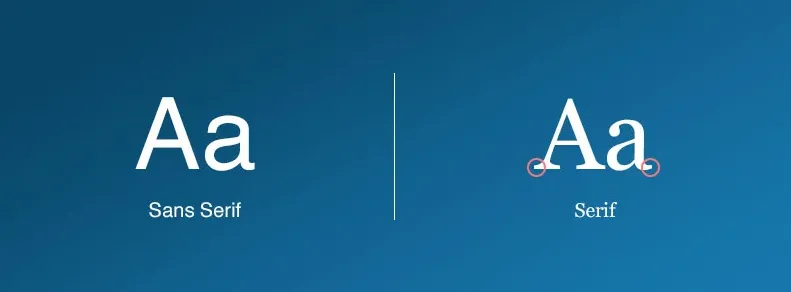 Typography for better UI and UX design
Typography for better UI and UX design
Furthermore, Larger font sizes, for example, catch the user's eye first and signify a focal point on your page. When a smaller font is beneath it, the reader instinctually knows that it's a subsection that will support the heading and perhaps provide more context or information.
Minor details concerning font size, weight, and height are vital for user interface design.
A line comes under 2-Dimensions, but if you drag them laterally; hence, shapes are self-contained. Every object is composed of shapes.
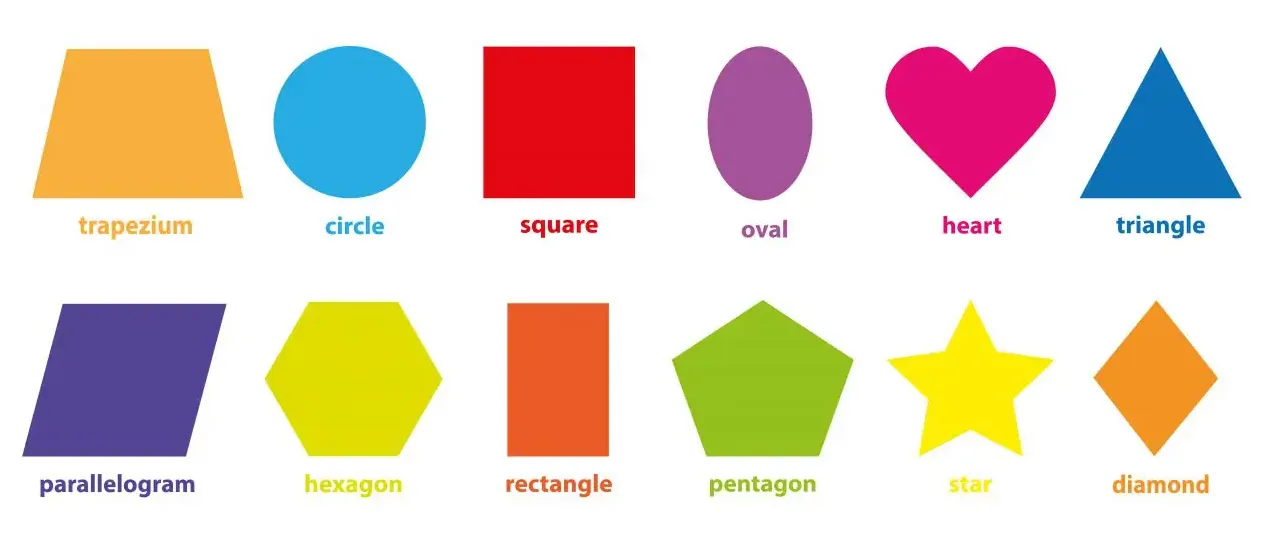 Image Source: Adobe Photo Stock
Image Source: Adobe Photo Stock
Thus, as a visual designer, you want to define the area, use lines, differences in values, texture, color, etc.
Colors come into play in visual design when you want people to instantly differentiate between objects of various shapes and sizes. So, selecting a color palette and their combinations create depth and add emphasis to help organize information.
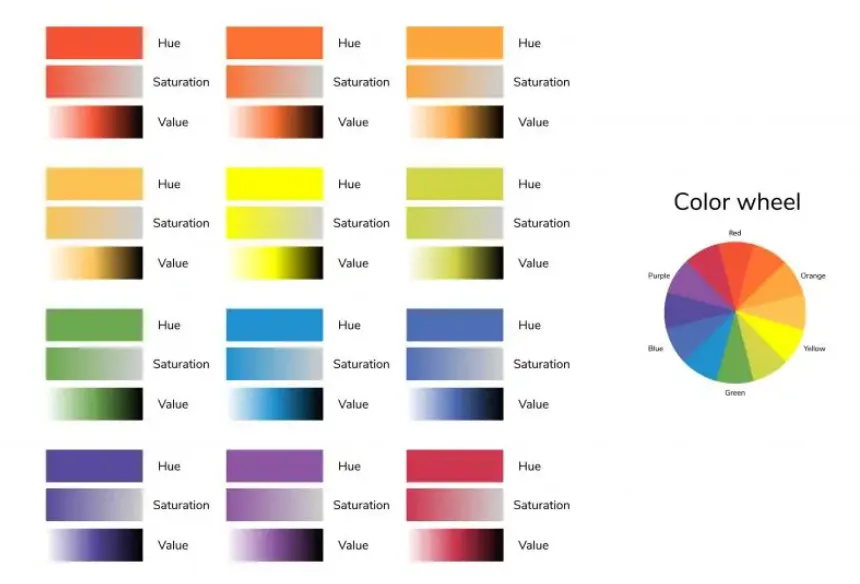 Image Credit: Adobe Photo Stock
Image Credit: Adobe Photo Stock
The color theory beautifully examines how various color choices psychologically impact the overall user experience for more curious minds.
Texture refers to how one feels and perceives a surface. You need to develop a pattern by repeating an element to create a texture.
 Stone Textile Background: Image Credit - Adobe Photo Stock
Stone Textile Background: Image Credit - Adobe Photo Stock
Depending on how and with what intentions you do it, it will strategically affect the users. Meaning, do you want their attention to attract or deter.
 A white paper background: Image Source - Adobe Photo Stock
A white paper background: Image Source - Adobe Photo Stock
Space concerns the area around an object. The space can be negative or positive. The positive one refers to the subject or areas of interest, like a person's face or furniture in the dining room.
 Image Source: Adobe Photo Stock
Image Source: Adobe Photo Stock
In contrast, the negative/white space tells about the background area surrounding areas of interest.
If done correctly, white space plays a pivotal role in coming up with successful designs and can -
And a visual designer's role is to creatively tie the design fundamental visual design elements together and build an appealing optimal layout in terms of the visual perspective.
The basic shape and size of an object make people differentiate them and identify. For instance, you can create simple or complex things by merely using straight lines - in the below image - a combination of lines seems like an input form.
It takes a lot of time for users to complete a task using digital products. Thus, the UI must be simple, intuitive, and predictable to ease it out for users to achieve their goals quickly. And that's why functionality, reliability, and usability are vital to visual design.
 Image Credit: NNGroup
Image Credit: NNGroup
Also, in terms of user experience, UX designers stress more on usability so that users' journeys are as smooth as possible.
Hence, when there is a clear indication for the approval of the overall design direction, you can proceed to focus on making the user interface (UI) pleasurable and digestible by arranging visual elements.
Similar to graphic design, visual design is all about beautifully and creatively implementing colors, texts/fonts, and images to enhance user experience (UX) and user interface (UI) with your creative setup. This design field is new and is a fusion of user interface (UI) design and graphic design.
The first primary goal of a visual designer is to make UIs usable—users are naturally drawn to the correct functionality and information. Graphic designers prioritize content on a web page through various means (as discussed above) to make it happen.
Designers can then add elements of delight like animated effects with crisp illustrations into their app designs to make the UI more attractive and intuitive.

To make sense of your visual design, you need a set of standards to follow. They are better known as design principles that effectively combine all the discussed design elements. Consider the following design principles and make it a practice to use them -
It deals with all the elements on a web page visually or conceptually appearing to belong together. As a visual designer, you must keep a balanced unity to avoid overwhelming designs.
It helps users in perceiving the overall design as opposed to individual elements. If the arrangement of design elements is straightforward, the Gestalt of the overall design will be obvious.
When you place something for your abstract idea, it's a space. __ Including space in your design help reduces noise, increases readability, and creates an illusion. For this, white/negative space is an integral part of your layout strategy.
It shows the difference in significance between items. Designers often create orders through different font sizes, colors, and placement on the page. Usually, the virtual objects to perceive are always at the top.
It generates the perception that all the elements in a design have equal distribution.
Note: It does not always imply that there is symmetry.
Contrast is to make objects in the design stand out by emphasizing differences in color, color, direction, and other characteristics.
The scale helps identify a range of sizes by creating interest and depth to demonstrate how each item concerns the other based on its size.
It focuses on having one element as the focal point and others as subordinate. It is often done through scaling and contrasting based on size, color, shape, position, etc.
It stands for creating continuity throughout your design without direct duplication. You can use similarity to make pieces work together over an interface and help users learn the interface quicker.
Let’s see an example consisting of all of the above principles of visual design -
 Image Source: Digital.Gov
Image Source: Digital.Gov
Things used in the above webpage are -
explore more?
An excellent visual design always wins people's hearts and can improve their overall user experience regarding a digital/physical product by making them feel better whenever they interact.
Hence, here are a few things visual designers can apply to their visual designs for a better UX -
Inconsistency in procedures of design methods and almost every other concept leads to unusability and confusion and can easily make even the most beautiful design useless. It also wastes users' time and effort to use a particular product, no matter how beautiful it is.
So, to maintain consistency and avoid confusion and unusability, you can create a style guide, define rules, and apply styles to layouts accordingly.
Visual hierarchy is for displaying items on a page/screen. And how well you are in calling users' attention to them says a lot about a visual designer. A clear visual hierarchy helps people communicate to your webpage/app and puts the users' engagement to focus on necessary actions.
It is more vital to a web design since people can find your competitors' website(s) a click away. If they can't find what they are looking for on your webpage, they will immediately leave and not return.
Do not ever assume that people will like or love your design because it looks good.
Without it, the whole creation around us is a place with no imagery. But to visuals, we react strongly.
So, the imagery and colors undoubtedly influence your visitors/users on how much they like your product.
Thus, test it with people and measure success based on user feedback/behavior, and do not wait for the end of development; instead, use a prototype to test your design decisions. Test it earlier and more often to be more confident about design decisions.
Although trends originating from the research and development in designs can make your visual design look intuitive and attractive to users, it's vital to evaluate every trend.
Look for long-lasting trends because no visual designer would probably want to invest time and effort in altering visual style(s) too often.
Let's see what design trends are there to follow in 2022 -
Anthropomorphism refers to attributing human emotions, intentions, and characteristics to non-human objects. User experience designers can involve Anthropomorphic Animations to turn abstract shapes into likable moving characters that mimic humans.
Keeping passwords secure in an era of multiple accounts of an individual is very confusing, according to the survey of 2005 Americans. This survey says that 57% of people forget their passwords right after resetting them. Conversely, 65% feel that they should write their passwords down so they don’t forget them.
Hence, forgetting passwords is a thing now, and you need to address it.
Material design = a “Design Language System.” It is all about bringing life to the material.
Human attention span is 8 seconds today and is decreasing day by day. So, to keep users hooked on your website/app is challenging. And that’s why brands are now pushing for large and bold typography in 2022.
Personalization is integral to the essentials of UI/UX design. Today, delivering highly targeted and personalized content is in top trend.
For example, you might have noticed how you receive personalized suggestions for music, movies, videos, various content streaming websites like Netflix, Amazon Prime, etc., and apps like Spotify.
Frankly speaking, visual design is all about convincing visitors that enter your website since it takes only a few seconds for your website to make a first impression on them.
And you're already aware of two things -
Both are usually based on what website visitors see and observe. They will start interacting and evaluating it from all different aspects. Thus, investing time, effort, and research into the visual design will help you create an incredible first impression for your visitors/users.
What Is an API? A Developer's Guide to Application Integration in 2025
By Dhruv Joshi
5 min read
What Is a Push Notification and Why It Matters for Your App Strategy
By Dhruv Joshi
5 min read
Top React Native Development Companies to Build Scalable Apps
By Dhruv Joshi
5 min read
How Wearable Technology Is Driving Real-Time Data Experiences in Mobile Apps
By Sannidhya Sharma
5 min read

Design


6 min
It’s time to redefine the strategies to drive innovation and creativity, embracing the UI UX design trends of 2024. From minimalistic designs to immersive AR interfaces, VUI, empathy-centric design, and accessibility, this blog post guides you to thrive and get ahead of competitors. The convergence of aesthetics and functionality plays a vital role in boosting the visibility of apps and websites. Along with this, you must be updated with the latest trends in the industry. Reach out to our UI UX professionals to know more about the driving force behind the industry!

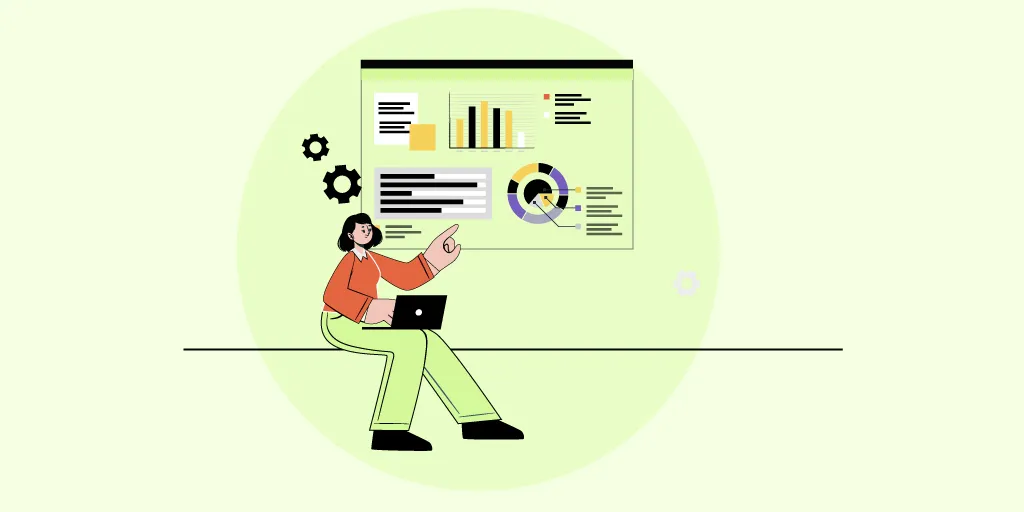
Design


6 min
Here, we explore the essentials of UI/UX design strategies specifically customized for startups. Navigating the intricate landscape of user interface and experience design is pivotal for laying the groundwork for success. We explore innovative approaches to crafting a seamless and user-centric foundation that captivates and retains users. From user research methodologies to the art of prototyping, discover how startups can elevate their digital presence and set the stage for long-term success through strategic UI/UX design.
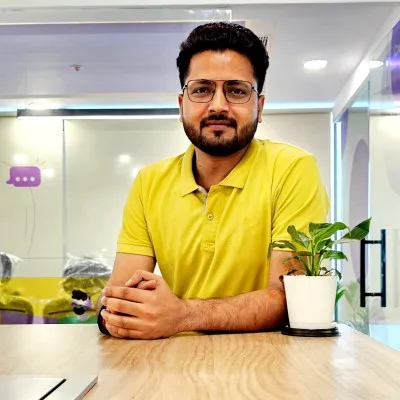
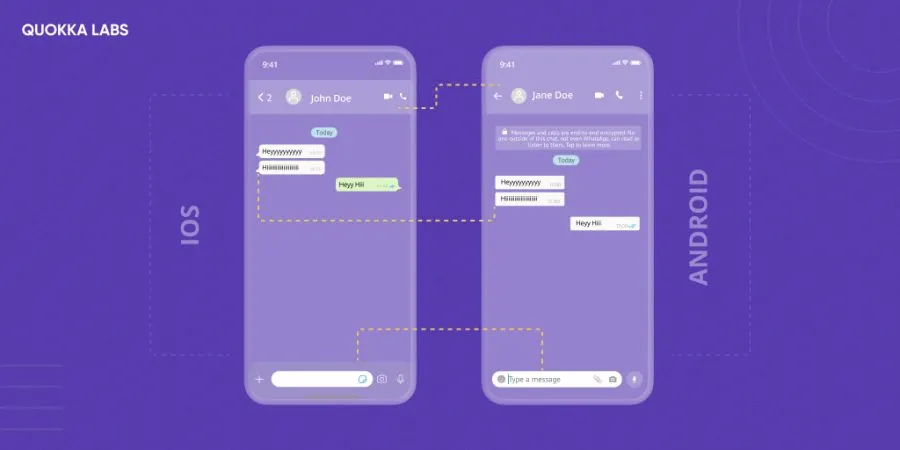
Design


3 min
The most basic difference between android and iOS app design for the button styles is that the buttons in iOS apps follow the flat design pattern, so consequently, they support the title case. However, the best Android app design follows Material Design, so inherently, they possess uppercase buttons styled with shadow.


Feeling lost!! Book a slot and get answers to all your industry-relevant doubts